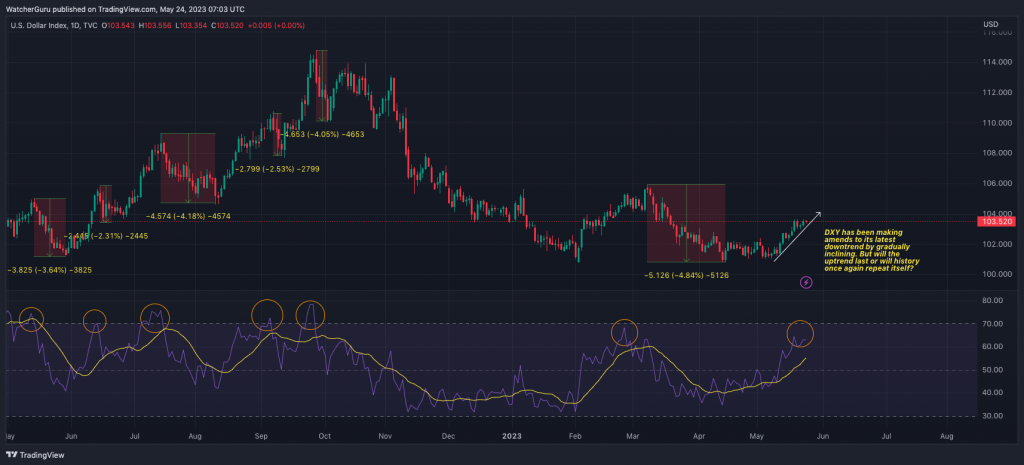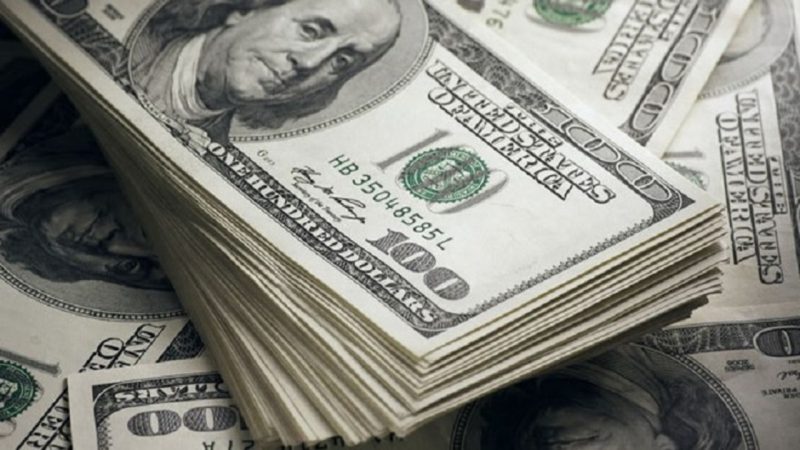The U.S. Dollar Index has been making amends to its latest downtrend by gradually inclining. From May 8’s lows of $101, DXY is already up to $103.5. In fact, when the daily timeframe chart is viewed, a clear-cut parabolic recovery seems to be taking place, and the index reading is currently hovering around its 2-month high.
However, the odds of DXY’s uptrend lasting seem to be narrowing down. Of late, the buying momentum has been intensifying in the Dollar market. The rising RSI is indicative of the same. Over the past year, this indicator has stepped into the overbought territory six times. On every occasion, the Dollar Index has dropped right after.
In a few cases, the drop has been immediate and has wound up quickly. In other cases, the correction has lasted for several days. As chalked out below, the dips have mostly ranged between 2% to 5%. So, if history were to repeat itself, the Dollar Index would initiate a pullback, as soon as the momentum strengthens a bit more and reaches previous high levels.


Also Read: MicroStrategy is a ‘Stronger Bet’ Than Coinbase: Analyst
Goldman Sachs: There’s room for Dollar to strengthen
There’s always light at the end of the tunnel, right? Well, according to Goldman Sachs, the U.S. Dollar has more room to strengthen than the market is currently estimating. Well, the macroeconomic conditions have a significant impact on forex trading. According to analysts from the investment banking company, credit conditions in the U.S. have not tightened as much as expected initially. Elaborating on the same, Goldman analysts Michael Cahill and Lexi Kanter wrote in a recent note,
“There is likely more room for dollar strength in the near term than what the market is pricing. Ultimately, we think total dollar depreciation for the year is more constrained than commonly believed.”
They added,
“The dollar is likely to decelerate only slowly from the peak, with a number of bumps along the way, because slack in the economy remains limited so policymakers will have to keep one foot on the brake.”
The analysts further went on to highlight that the depreciation of the USD is generally associated with “strong growth” in the rest of the world, and “not weak growth in the U.S.” According to Cahill and Kanter, activity in Europe and China has disappointed robust expectations from earlier in the year. The analysts stressed that the Euro “is not stepping into the role yet,” and added,
“We are still waiting for a challenger.”





